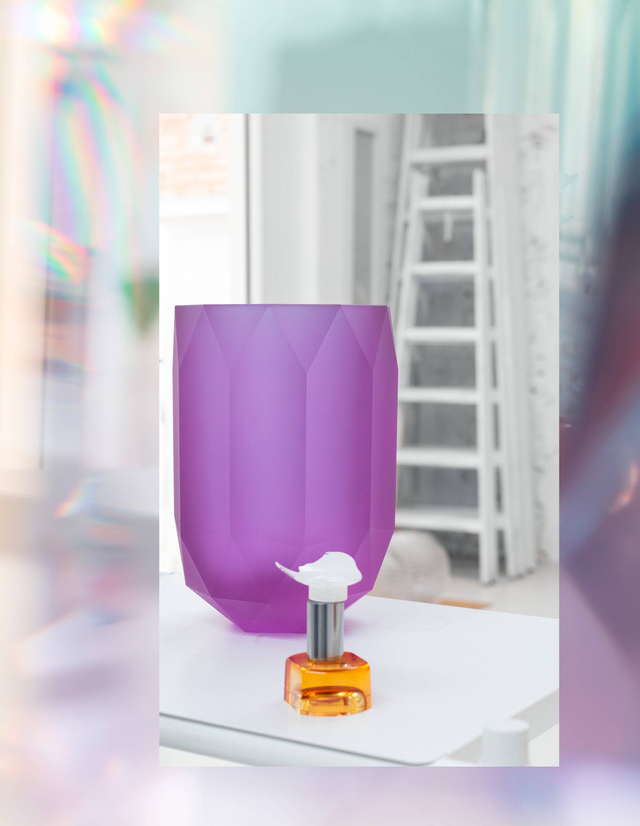Hand-Made Experiments
By: Eva Slunečková
Photo: Zuzana Veselá
Ten years ago, you launched your first lighting collection with Lasvit – Neverending Glory. Do you remember what went into designing it?
I clearly remember the moment when Lasvit’s Art Director Maxim Velčovský approached us to collaborate. It was barely a year after me and Henry Wielgus started the studio, I was living in London at the time, and was just on a visit to Prague to take part in the Designblok festival. I had just installed our booth and was a mere stone’s throw away from Lasvit’s presentation.
I remember meeting him in the hallway and showing him our freshly set up installation. He liked our work so much he immediately offered to collaborate. The only small problem was that we had less than ten days to turn in our first design. (laughs)
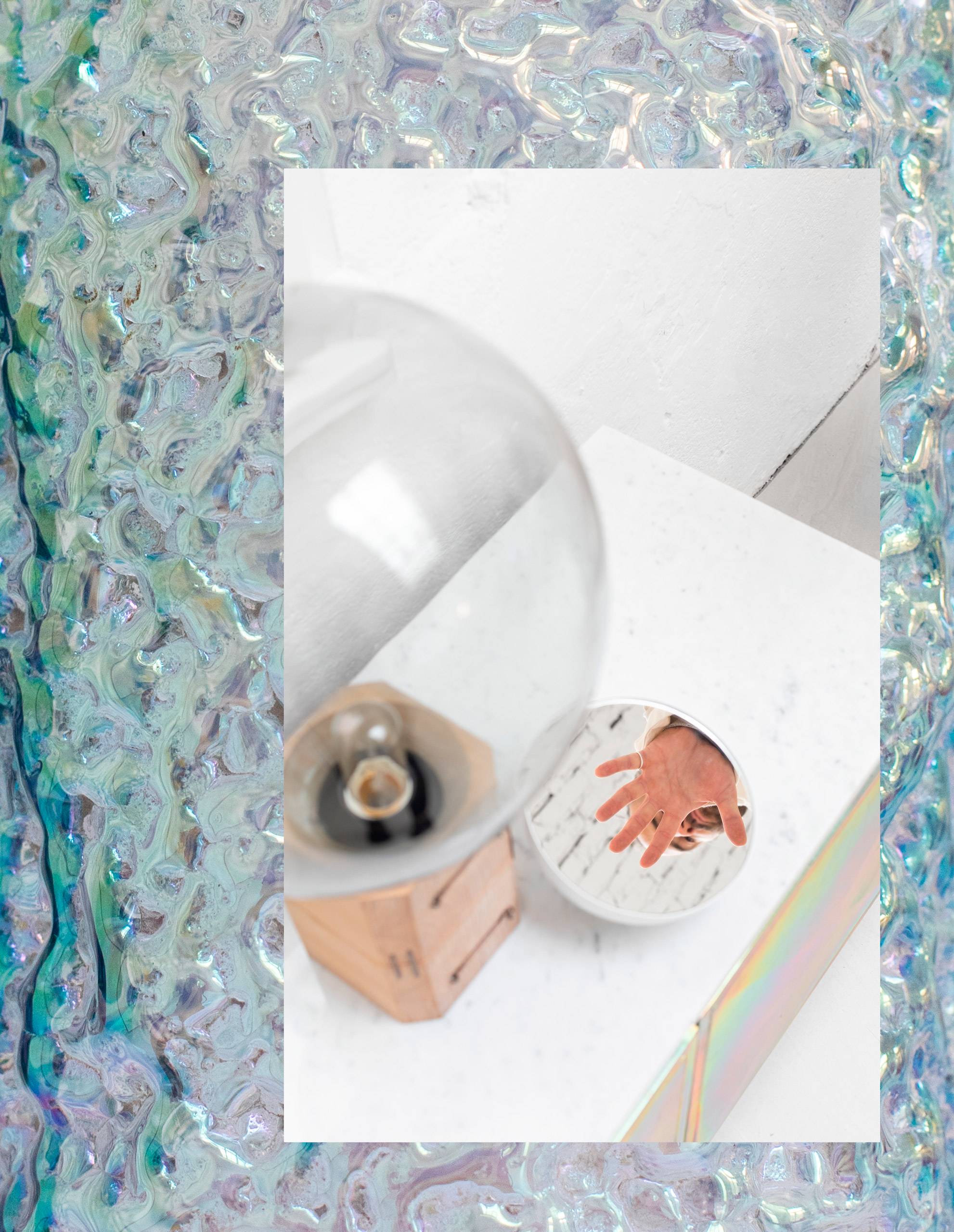
Well, they do say a genius design sometimes takes less than a minute to crystallize. But how did you manage to design a bestseller in just under ten days?
Honestly, it was ridiculous. We worked day and night on it, and finally came up with five concepts. Maxim visited us at our studio, and we left Neverending Glory for last, because we were sure it had real potential. And we were right, as he was immediately interested in it.
At that time, you already achieved success with the design you made as part of your graduate thesis – you were rendering iconic Modernist furniture in wire contours, and even developed the project for Cappellini… And we find this same tendency in Neverending Glory as well.
In Neverending Glory, we originally intended to update the classical form of a candle-chandelier. We liked the idea of retaining only its outline, of making it symbolic. I think it was me who came up with the idea, and Henry then proposed we use the shapes of particular chandeliers which hang in the world’s most famous theaters.
We were fascinated by that singular moment of awe – whenever you walk into the La Scala in Milan, the Palais Garnier in Paris or New York City’s Metropolitan Opera, it is always the exquisite chandelier which first takes one’s breath away. So, we started playing around with their iconic shapes and rotating them on their axis. And it was Maxim who brought our attention to the Estates Theater in Prague. We found out it was the only theater which never had to be rebuilt due to being damaged in a fire. It even hosted Wolfgang Amadeus Mozart who, in 1787, premiered his famous opera Don Giovanni there.
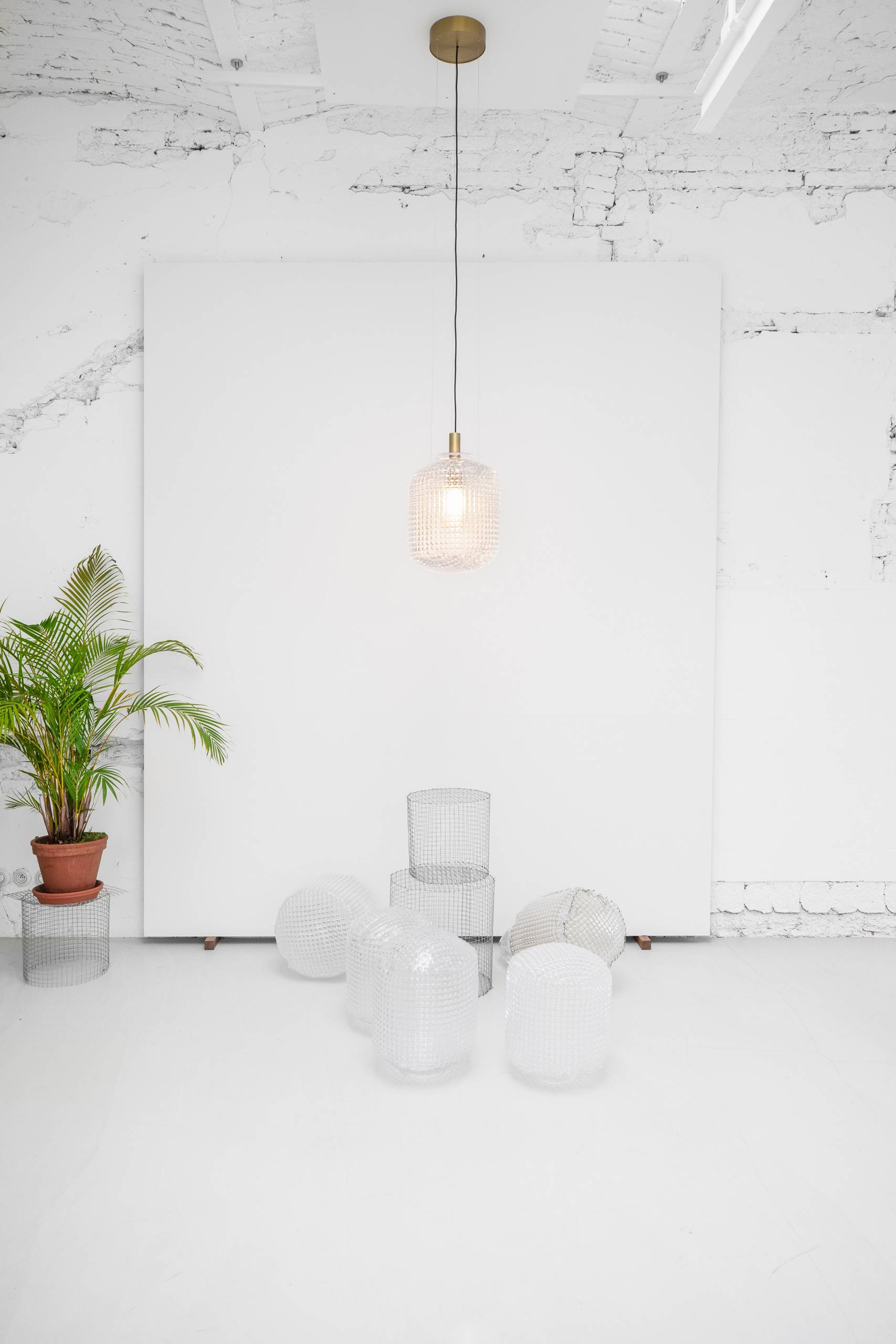
Since then, the Neverending Glory collection has become a great hit. It hangs in projects all over the world, for example also in the homes of singer Justin Bieber and actress Salma Hayek. What does it take for a design to become successful?
At first sight, it has to scream: “this is it”. The magic of Neverending Glory consists in that it is simply different from all other designs.
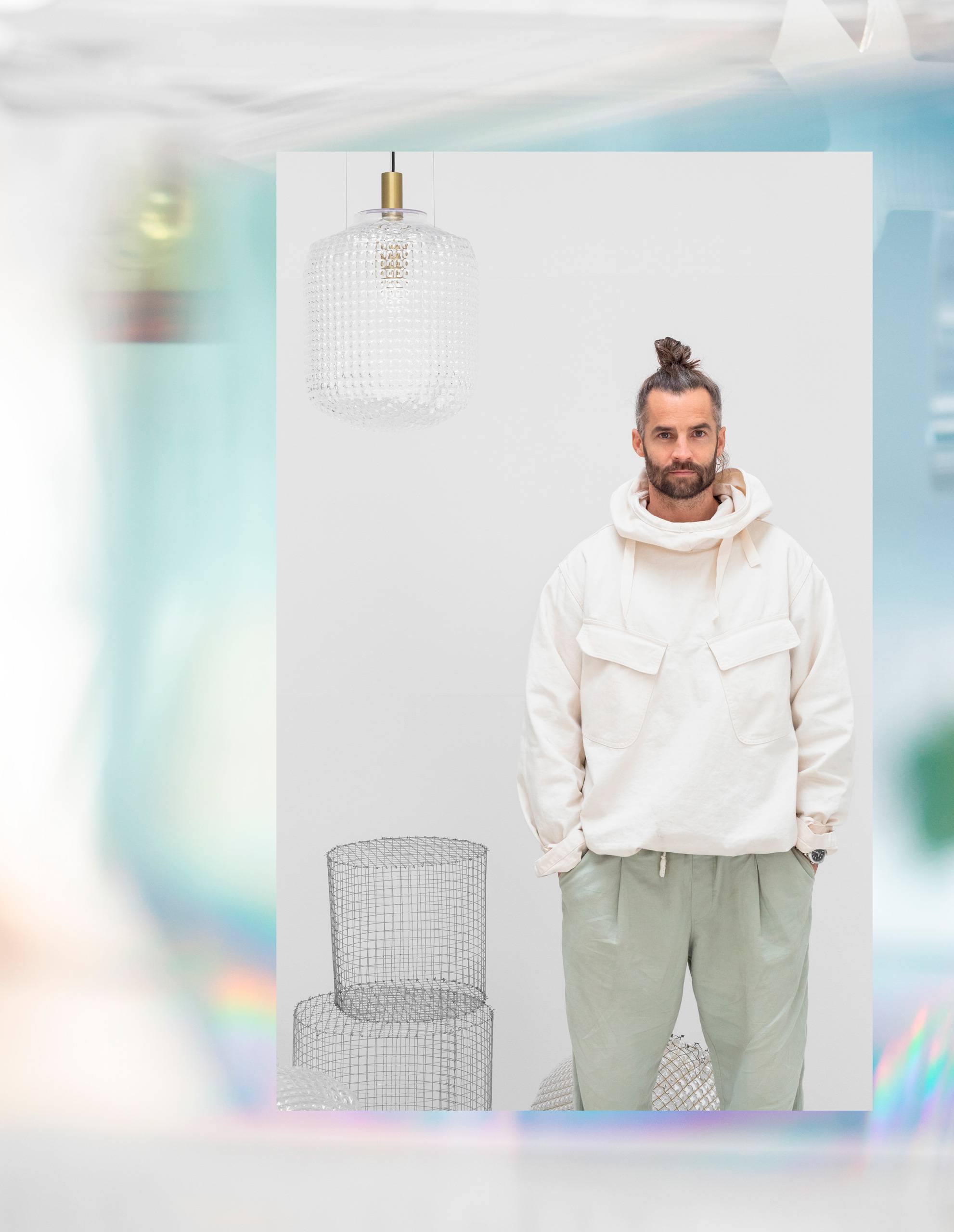
GLASS IS A TRUE MYSTERY
What did you find surprising about working with glass? Neverending Glory was, after all, the first project where you used the material…
In the case of this collection, we started out thinking the installations would end up being much bigger… But once in the glassworks, we found out that our ideas were simply not commensurate with reality. The glassmaking technique did not allow us to make the large shapes we had originally envisioned. It was our first time working with glass, and our inexperience in fact helped us design it, as sometimes knowing too much can limit the imagination even before you sketch it out on paper.
Being green is great! After we launched the Neverending Glory collection, our designer colleagues, who have often worked with glass much longer, came to us and said that only someone who has never before worked with glass could have come up with such a design. There is definitely something to that! (laughs)

This is also true for your new collection Hidden Light, which you had been developing over a number of years. What turned out to be most challenging about it?
We made the prototype very quickly and both me and Henry really liked the way it looked. The biggest challenge for us was developing the initial concept into a readily repeatable product. I’m very grateful to the developers and glassworkers who stayed with us every step of the way and didn’t give up despite the many obstacles and challenges.
I think Hidden Light and Neverending Glory are very much related, in an unconscious sort of way. We were originally approached by Lasvit’s Art Director for my graduate work with wired furniture, and he asked us whether we might not wish to blow something into it too. And although Neverending Glory ultimately went a different way, we sort of came full circle with Hidden Light.
“Getting a good idea is a question of the right moment.”
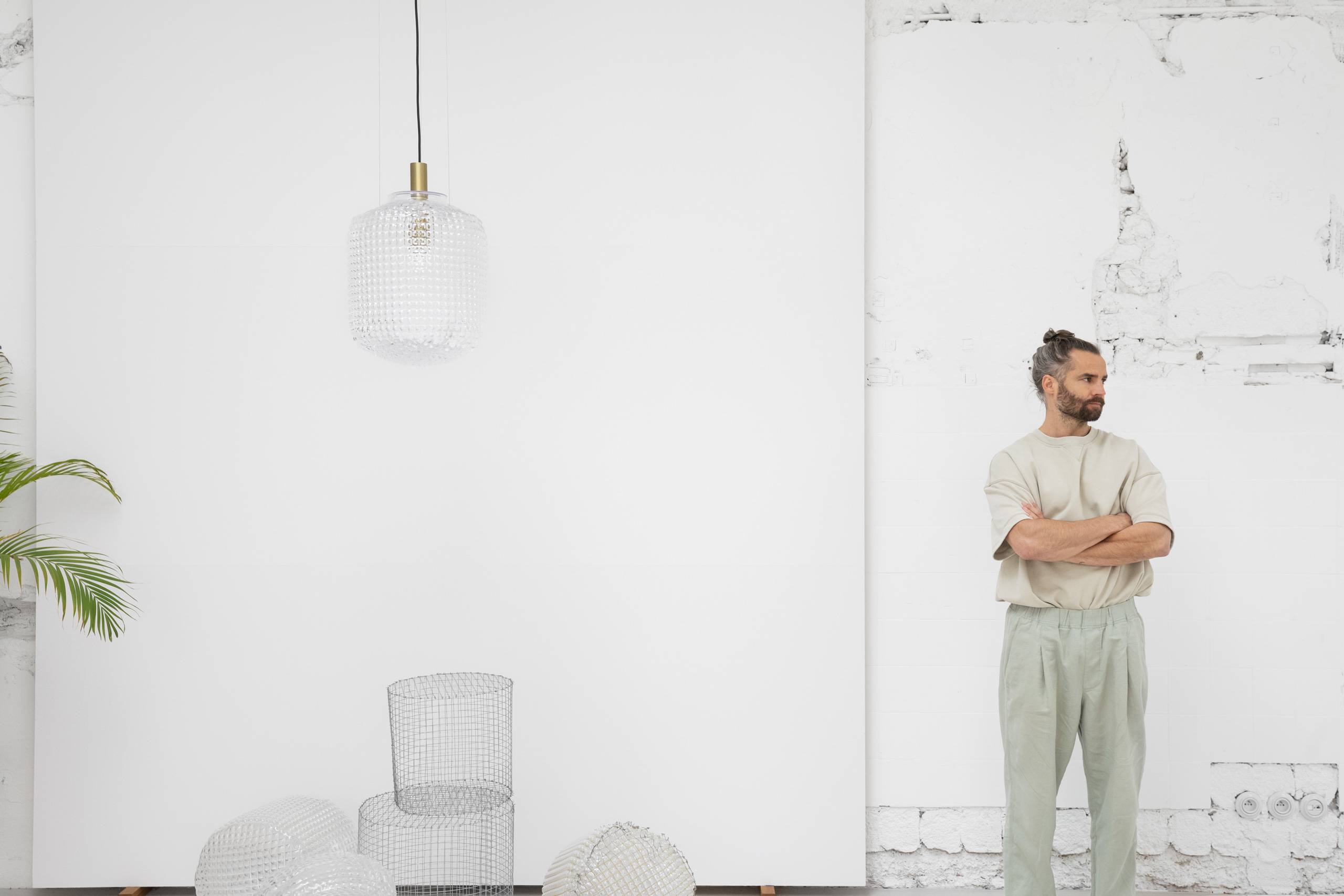
How long have you been working on Hidden Light?
I distinctly remember driving back from Nový Bor with Henry – we were thinking about the new design we had just presented at Lasvit, but the reaction was rather lukewarm. They were these sheet-metal structures which poured glass. So, we were leaving a little disappointed.
But we started brainstorming in the car: What if the tube wasn’t sheet-metal, but wire, and the glass poured outwards in all directions? In those two hours of driving from Nový Bor to Prague, we developed the new idea, and at home we sketched it out. We couldn’t wait to see how it would really look, so we didn’t waste any time and bought a metal net out of which we made the first construction. Then we went to the glassworks and let the glassworkers blow glass into it. We knew right away that this was the way to go.
“It was obvious Hidden Light and Neverending Glory had tremendous potential from the very first, because they were totally different from anything else.”

What was the Art Director’s reaction?
We were just moving between studios at the time, so we were meeting at Henry’s cottage. We arranged a meeting with Maxim and [Lasvit producer] Mark Effmert in this picturesque rural landscape, and the lights shone so wonderfully it was like a fairy tale. It took us a long time to iron out the entire process of blowing the glass into a metal mount without having the materials stick together. It proved to be a big challenge.
We finally developed a special metal mould which would make the glassworkers’ job easier, so they would no longer had to fret whether the metal form would decouple from the glass at the very end. The form we started using was actually a 3D scan of the original, handmade one, and even includes all its little inconsistencies. In this way, Hidden Light is also a commentary on the post-industrial zeitgeist.

The human touch of a craftsman is important to your projects, isn’t it?
I enjoy the tension between industrial and manual labor, so even though my projects might be produced in large series, I always like to leave them with a touch of craft – whether it is in their structure, material or by including small mistakes… It makes the object much more interesting and adds a human dimension.
What is the most important principle of Hidden Light?
It was really important for us to keep the light source opaque and the lightbulb invisible. This later also generated the name. It makes the entire object truly magical, while remaining functional and giving light. It’s always a great challenge to combine these two dimensions just right.
““Lasvit opened my eyes to the ways of glass.””
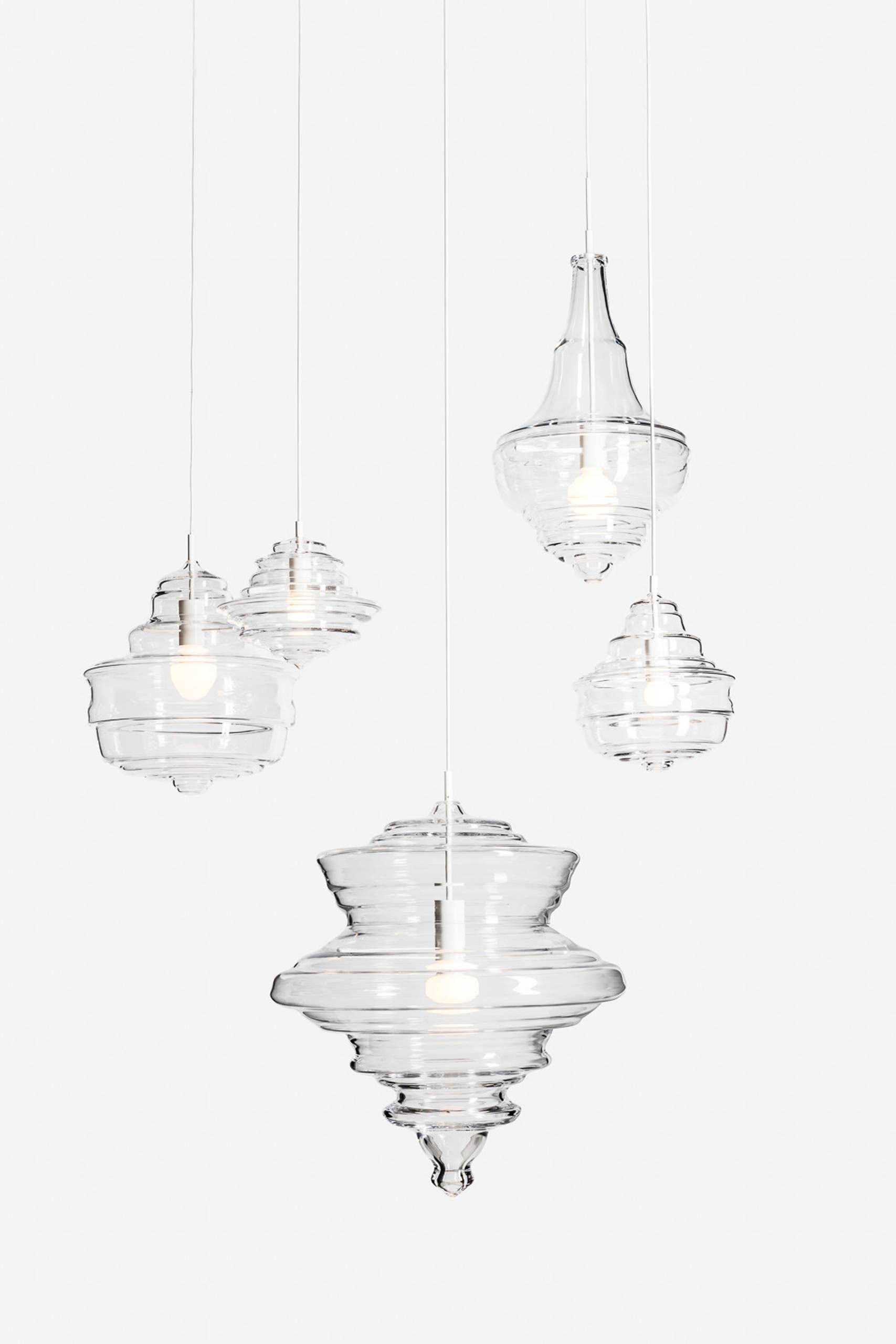
ON MY OWN
You usually show your clients only the finished product, and never the preliminary sketches. Why is that?
I don’t like to wait. I prefer to complete the idea myself and only then start making compromises. It usually takes a lot of energy and money, and sometimes doesn’t pay off, but it makes the most sense to me. (laughs)

While Hidden Light was being developed, the world was going through a pandemic and both you and Henry had newborns. You decided to take a sabbatical from work, and now both of you work on your own. What did working in a team give you?
Working with Henry, I realized just how important it is for any design to have a story. The proposal basically starts out with it, and gradually finds its way to its final form. In the initial phases of the design, neither the shape nor materials are at all important to me.

While Henry radically changed profession, you stayed in the design field, renovated your own studio and today work under your own brand.
2018 was a breaking point for me. My second child was born, and after the last hurried years – going from one collaborative project to another, constantly moving between Milan, London and Prague – I decided it was time for some family time. I finally ended up taking a two-year break and was working on setting up my own space in an old medicine factory in my favorite neighborhood of Vršovice. Nothing much has changed apart from that, and nowadays I go headlong into projects with as much fervor as ever before. (laughs)
Jan Plecháč’s career as a multidisciplinary designer started in 2011 at the presentation of young talent at the Salone Satellite in Milan. His project was so good that it gained the attention of international gallerists, institutions and furniture makers, and immediately catapulted him among the elite of product design. Since then, he has been designing for world-renown brands such as Cappellini, Menu, La Chance or Lasvit, making collector items which straddle the fields of art and design for galleries like Mint Shop and Rossana Orlandi, as well as purely bespoke products for many private clients. His eclectic portfolio shows Plecháč’s experimental approach – whether it is product or interior design, it is always the overall concept which is most important for him, and aesthetics only come second. His work often shows the signs of craftsmanship. He has been part of the Lasvit family since 2012.




